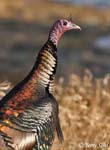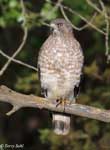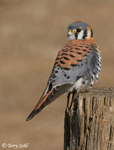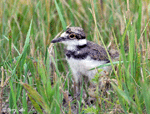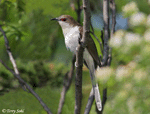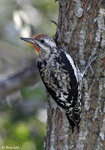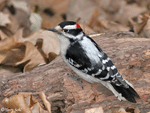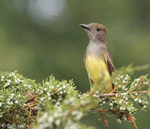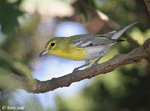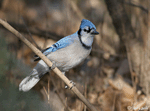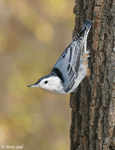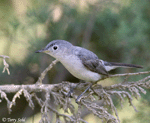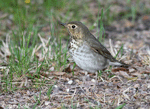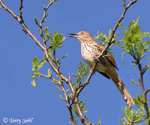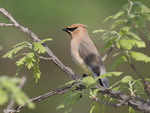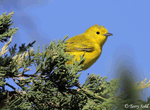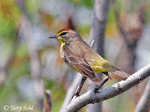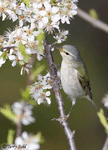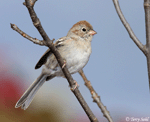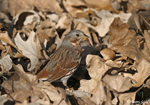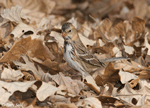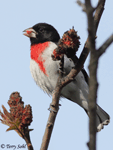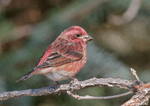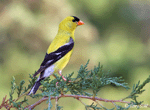South Dakota Birding Hotspot
Big Sioux Recreation Area
Minnehaha County
| Click on points to view actual ground photos and birding information for those locations. Use the Google tools to switch between road maps, terrain, or satellite images. |
Directions:
The Big Sioux Recreation area is located on the southwestern corner of the city of Brandon, just 5 miles from the eastern edge of Sioux Falls. From I-90, the Big Sioux Recreation area is easily found. Take exit 406 and head south into Brandon. Follow the road (Splitrock Blvd.) south through Brandon, for approximately 3 miles. Just as you're passing Huset's Speedway, a small race track on the east side of the road, you'll take a hard right onto Sioux Blvd. You'll immediately pass an elementary school and come to a stoplight. Turn left at the stoplight onto Park Street. Head west about half a mile, and you'll find the entrance to the Big Sioux Recreation Area on the right.
From I-229 in Sioux Falls, take exit 7 to Rice Street, and head east 6 miles to Brandon. Take a right at the first stoplight as you get into town, onto Sioux Blvd. Go south on Sioux Blvd. 1.5 miles to the next stoplight, at Park Street. Turn right and go west on Park Street, where you'll find the entrance to the Big Sioux Recreation Area on the right in about half a mile.
The image below represents color aerial photography of the Newton Hills State Park area, as seen on Google Earth.
Geographic Coordinates: 43° 34' 22" N, 96° 35' 41" W (coordinate of main entrance to park).
Description:
The Big Sioux Recreation Area lies along the Big Sioux River on the southwestern edge of the city of Brandon. The river runs through the heart of the park, and is bordered by bottomland riparian forests, with massive cottonwoods near the river and old, twisted burr oaks on the slopes leading up from the river. The entire western half of the park is an open grassland with some scattered shrubs, set on rolling hills leading to a high ridge on the western edge of the park. Smaller grassy and brushy openings can be found on the east side of the river. Dense deciduous forest and open woodland is found along much of the eastern side of the river. The diversity of habitats make the Big Sioux Recreation Area a nice place to find a wide variety of birds.
The park is popular with for camping, picnicking, and hiking in the summer. Campground areas in the southern part of the park are nearly always full during the summer months, especially on weekends. Several popular hiking trails are found in the park, leading through open grassland, along the river, or through dense forest. Archery ranges have been set up on the west side of the river. In the winter, the area is popular for cross-country skiing.
Birding can be good at all seasons. In May, the birding can be terrific, as the summer crowds are still not around, the summer residents are arriving, and it is peak migration for many songbirds. The summer months can be very productive, but you do have to often deal with full campgrounds and busy hiking trails, especially on weekends. The campers are largely gone by fall, and I've had particularly good luck with migrating sparrows at this time of year. In winter, you'll have the park to yourself at times, and can find the typical winter species of South Dakota, with the potential for some surprises.
Points of Note (Click on numbers on the map to see photos of the locations):
My favorite time and place to bird in the park is in May, at point 1 (see map to the right) along the river. This small strip, a paved hiking path squeezed between the river and the campground, can be truly wonderful for spring migrants, as well as the summer residents. Sumac and other brush is found between the path and the river, while juniper trees are found between the path and the campground. Walking the path in the spring is often characterized by many species of songbirds, flitting between the brush and the junipers. This area is good at all season, even in winter, when the cover offered by the shrubs and trees, and the often heavy loads of juniper berries, attract many birds at times.
Right at the entrance to the park, along "Park Street", is an open grassy field with scattered shrubs (point 2). This area is wonderful for sparrows, especially in the fall, where you may find a large variety of species. The fence line along the road is also a good place to look for bluebirds and kingbirds.
The paved path along the river at point 1 continues through forest land around point 3 and beyond. This is a nice path to look and listen for woodland species and it can be good for migrating songbirds in the spring.
Point 4, the campground area, USED to be a good birding location outside of summer, when the campers have largely left. The campground is a mix of large cottonwoods, locust trees, maples, junipers, pines, and many shrubs. Berry-filled shrubs and juniper trees used to line the roads along the campground, and attracted many birds in the fall and winter. The evergreen trees offered shelter that often held some surprises. Sadly, that's all gone now. The SD Parks people ripped out all the vegetation along the road, and the bird life is definitely much less than it used to be. The photo accompanying point 4 on the map shows what the area used to look like. Now it's open from one end of the campground to the other, with no "pesky" vegetation to get in the way of the summer camping hordes.
Taking the footbridge across the river takes you to the much less used western side of the park, a large expanse of grassland with scattered shrubs and trees (point 5). There are a couple of little wet meadows that can hold Sedge Wrens and other surprises. On one windy fall day, I had a memorable experience watching soaring hawks by walking to the ridge top on the western edge of the park.
Point 6 is the start of the "Valley of the Giants" Hiking trail. As you start on this trail towards the north, you'll go along a bluff overlooking the river, and are at eye level with a canopy of old Burr Oaks. This spot can be excellent for watching migrating songbirds in the spring, as they move about the canopy. Continuing on, the trail drops to a riparian forest area around point 7. Some of the largest old, dead trees have been removed, but this area still has some of the "giants" for which the trail is named, particularly very large cottonwood trees.
Point 8, and really the entire eastern boundary of the park, is marked by a treeline of junipers. The belt of junipers tends to be thicker at the northern part of the park, and kind of trickles out towards the park entrance, but the entire belt can be great in the winter, as the juniper berries attract quite a few birds. The shelter offered by the trees also can result in some surprises.
Birds of Note:
The variety of habitats in the park brings with it a variety of bird species. My favorite thing to do in the park is look for warblers (and other migrants) in the 2nd or 3rd week of May. You will always find Yellow Warblers (breeds here), American Redstarts (breeds here), Orange-crowned Warblers, Common Yellowthroat (breeds here), Tennessee Warbler, and Yellow-rumped Warblers in the spring. You never know what other warbler species you may find. Other species I have found in the park include Palm Warbler, Mourning Warbler, Chestnut-sided Warbler, Northern Parula, Black-throated Green Warbler, Bay-breasted Warbler, Blackpoll Warbler, Black-and-white Warbler, Wilson's Warbler, and Canada Warbler. The list of other warblers you may find is probably nearly as long.
Another group of birds I have a lot of luck with in the park are sparrows. Field Sparrows are common around the many areas of sumac, from Spring through Fall. Chipping Sparrows are common in summer, as are Song Sparrows. Migration and winter bring a wide variety of sparrows, including Fox Sparrows, Harris's Sparrows, Clay-colored Sparrows, White-throated Sparrows, White-crowned Sparrows, American Tree Sparrows, and Lincoln's Sparrows.
The Big Sioux Recreation Area is an obvious place to look for woodland species. Rose-breasted Grosbeaks are quite common, as are Baltimore Orioles and Orchard Orioles. Indigo Buntings and Scarlet Tanagers are less common, but still often seen. Gray Catbirds and Brown Thrashers can be found in thickets throughout the park. Both Black-billed and Yellow-billed Cuckoos can be found (often just heard), while Red-eyed Vireos, Yellow-throated Vireos, and Blue-Gray Gnatcatchers can be seen flitting in the canopy. Although not (yet!!) confirmed to breed here, you can find Ruby-throated Hummingbirds from May through September in the park.
The park supports a large number of woodpeckers, including many Red-bellied, Downy, and Hairy Woodpeckers, as well as Yellow-bellied Sapsuckers and Northern Flickers. White-breasted Nuthatches are common all year, while Red-breasted Nuthatches and Brown Creepers can be found in migration and in winter. I have found four species of owls in the park, Eastern Screech Owls, Great Horned Owls, Short-eared Owls, and Long-eared Owls. Cooper's Hawks are occasionally seen in the summer, Northern Goshawks less often seen in the winter, and Bald Eagles could be seen flying overhead at nearly any season (a local nest is nearby).
Other Birding Locations (sorted by distance):
- Beaver Creek Nature Area (~4 miles)
- Outdoor Campus in Sioux Falls (15 miles)
- Dewey Gevik / Wall Lake (~30 miles)
- Newton Hills State Park (~30 miles)
- Western Minnehaha County (~35 miles)
- Madison Waterfowl Production Area (~55 miles)
- Dakota Nature Park, Brookings (~60 miles)
- North Alabama Bend (~70 miles)
- Lake Thompson Area (~85 miles)
- Gavin's Point Dam (~110 miles)
- Presho Area (~185 miles)
- Fort Pierre National Grasslands (~200 miles)
- Pierre / Oahe Dam Area (~230 miles)
- LaCreek National Wildlife Refuge (~305 miles)
Additional Information - Big Sioux Recreation Area:
